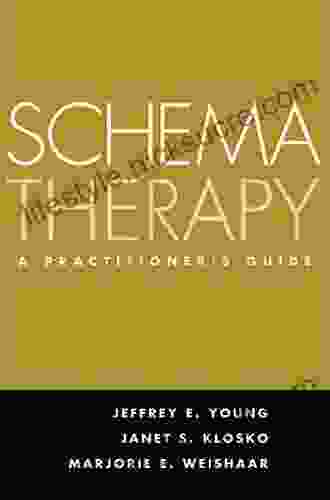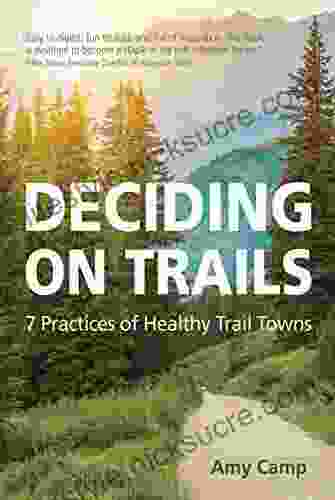Treating Traumatic Bereavement: A Practitioner Guide

Traumatic bereavement is a unique and complex form of grief that can result from the sudden, unexpected, or violent death of a loved one. It can lead to severe and long-lasting psychological, emotional, and physical symptoms. Treating traumatic bereavement requires a trauma-informed and evidence-based approach that addresses the unique needs of the bereaved individual.
4.6 out of 5
| Language | : | English |
| File size | : | 2037 KB |
| Text-to-Speech | : | Enabled |
| Screen Reader | : | Supported |
| Enhanced typesetting | : | Enabled |
| Word Wise | : | Enabled |
| Print length | : | 377 pages |
This guide provides practitioners with a comprehensive overview of the assessment and intervention of traumatic bereavement. It covers:
* Understanding the nature and impact of traumatic bereavement * Assessing the needs of bereaved individuals * Implementing evidence-based interventions * Self-care for practitioners
Understanding Traumatic Bereavement
Traumatic bereavement is characterized by several key features:
* Sudden and unexpected death: The death occurs abruptly and without warning, leaving the bereaved in a state of shock and disbelief. * Violence or trauma: The death is caused by violence, such as a homicide, accident, or natural disaster. This can add an additional layer of trauma and fear. * Complicated grief: The bereaved individual experiences intense and prolonged grief symptoms that interfere with their daily life and functioning.
Impact of Traumatic Bereavement
Traumatic bereavement can have a profound impact on individuals, including:
* Psychological symptoms: Depression, anxiety, post-traumatic stress disorder (PTSD),and other mental health issues. * Emotional symptoms: Numbness, shock, anger, guilt, and profound sadness. * Physical symptoms: Sleep disturbances, appetite changes, somatic complaints, and immune system problems.
Assessing Needs of Bereaved Individuals
The assessment of traumatic bereavement should be comprehensive and trauma-informed. It should include:
* Trauma history: Explore any previous traumatic experiences or exposure to violence. * Circumstances of the death: Gather information about how the death occurred and its impact on the bereaved. * Grief reactions: Assess the individual's emotional, psychological, and physical responses to the loss. * Support systems: Identify existing sources of support and determine their adequacy.
Evidence-Based Interventions for Traumatic Bereavement
Several evidence-based interventions have been developed to address the needs of individuals experiencing traumatic bereavement:
* Cognitive-Behavioral Therapy (CBT): Focuses on identifying and challenging maladaptive thoughts and behaviors that contribute to grief. * Eye Movement Desensitization and Reprocessing (EMDR): Uses eye movements to help process traumatic memories and reduce emotional distress. * Trauma-Focused Therapy (TFT): Utilizes a structured approach to help clients understand and work through the trauma associated with the death. * Grief Group Therapy: Provides a supportive environment for bereaved individuals to share their experiences and learn coping mechanisms. * Medication: Antidepressants and anti-anxiety medications may be prescribed to manage symptoms, but should be used cautiously and in conjunction with therapy.
Self-Care for Practitioners
Supporting individuals experiencing traumatic bereavement can be emotionally demanding. Practitioners should prioritize self-care to avoid burnout and maintain their own well-being:
* Self-reflection: Take time to process your own experiences and emotions related to the work. * Boundaries: Establish clear boundaries with clients to prevent emotional exhaustion. * Support systems: Build a network of colleagues, supervisors, or therapists for support and consultation. * Continuing education: Stay informed about the latest research and best practices in traumatic bereavement treatment.
Treating traumatic bereavement requires a specialized approach that recognizes the unique needs of bereaved individuals. By utilizing evidence-based interventions and prioritizing self-care, practitioners can effectively support clients in their grieving journey and help them rebuild their lives after loss.
Remember that grief is a highly personal and individualized experience. It is essential to tailor interventions to the specific needs and strengths of each bereaved person. With compassion, competence, and a commitment to self-care, practitioners can make a significant difference in the lives of those affected by traumatic bereavement.
4.6 out of 5
| Language | : | English |
| File size | : | 2037 KB |
| Text-to-Speech | : | Enabled |
| Screen Reader | : | Supported |
| Enhanced typesetting | : | Enabled |
| Word Wise | : | Enabled |
| Print length | : | 377 pages |
Do you want to contribute by writing guest posts on this blog?
Please contact us and send us a resume of previous articles that you have written.
 Fiction
Fiction Non Fiction
Non Fiction Romance
Romance Mystery
Mystery Thriller
Thriller SciFi
SciFi Fantasy
Fantasy Horror
Horror Biography
Biography Selfhelp
Selfhelp Business
Business History
History Classics
Classics Poetry
Poetry Childrens
Childrens Young Adult
Young Adult Educational
Educational Cooking
Cooking Travel
Travel Lifestyle
Lifestyle Spirituality
Spirituality Health
Health Fitness
Fitness Technology
Technology Science
Science Arts
Arts Crafts
Crafts DIY
DIY Gardening
Gardening Petcare
Petcare Terry Wieland
Terry Wieland Mark W T Harvey
Mark W T Harvey Dolores Kong
Dolores Kong Louise Bates Ames
Louise Bates Ames Gail Maccoll
Gail Maccoll Byron Nelson
Byron Nelson Amy B Middleman
Amy B Middleman Rosalind Wiseman
Rosalind Wiseman Jim Santos
Jim Santos Joseph Conrad
Joseph Conrad Gia Giasullo
Gia Giasullo Erica T Lehrer
Erica T Lehrer Cynthia Gabriel
Cynthia Gabriel Doug Peterson
Doug Peterson Sarah J Maas
Sarah J Maas Sheena Johnstone
Sheena Johnstone Charles Thompson
Charles Thompson Helena P Blavasky
Helena P Blavasky Grant Dever
Grant Dever H Bedford Jones
H Bedford Jones Timothy Malcolm
Timothy Malcolm Jacob Bronowski
Jacob Bronowski Wolf Moon
Wolf Moon Andy Hunt
Andy Hunt Dave Hanson
Dave Hanson Autumn Jordon
Autumn Jordon Chris Carlsson
Chris Carlsson Kathleen Glasgow
Kathleen Glasgow Hadley Wickham
Hadley Wickham Martin Pollizotto
Martin Pollizotto Carlo Buzzichelli
Carlo Buzzichelli Robert W D Ball
Robert W D Ball Jan Marie Mueller
Jan Marie Mueller Randy Schultz
Randy Schultz Sarah Woodbury
Sarah Woodbury Michelle Newhart
Michelle Newhart Dr Bob Rotella
Dr Bob Rotella Jean Rose
Jean Rose Amiee Mueller
Amiee Mueller Benjamin Jelen
Benjamin Jelen Topher Donahue
Topher Donahue Christopher Harlan
Christopher Harlan Jeff Martone
Jeff Martone Steven C Hayes
Steven C Hayes Joel Cotton
Joel Cotton Catherine Dees
Catherine Dees K M Shea
K M Shea Traci Gormley
Traci Gormley David Elkington
David Elkington Shalabh Aggarwal
Shalabh Aggarwal Jerry D Moore
Jerry D Moore Norman Doidge
Norman Doidge John L Field
John L Field Antonio R Damasio
Antonio R Damasio Muhammad Vandestra
Muhammad Vandestra Pamela Lynn
Pamela Lynn Wendy Margolis
Wendy Margolis Nathan Belofsky
Nathan Belofsky Test Masters
Test Masters Karen Deerwester
Karen Deerwester Claudia J Carr
Claudia J Carr Amby Cooper
Amby Cooper Michael Reichert
Michael Reichert Joe Dante
Joe Dante Andy Couturier
Andy Couturier Joellen Patterson
Joellen Patterson Ken Chaddock
Ken Chaddock June Cl Tan
June Cl Tan Michaela Riva Gaaserud
Michaela Riva Gaaserud Laekan Zea Kemp
Laekan Zea Kemp Jean Van T Hul
Jean Van T Hul Marco Ferrero
Marco Ferrero Jenni Hicks
Jenni Hicks Ananda Lowe
Ananda Lowe Theodore Sider
Theodore Sider Lizabeth Hardman
Lizabeth Hardman Vinod Kumar Khanna
Vinod Kumar Khanna Ignatius Donnelly
Ignatius Donnelly Jack Tupp
Jack Tupp John Lukacs
John Lukacs James Mullaney
James Mullaney Md Mahady Hasan
Md Mahady Hasan Melody Schreiber
Melody Schreiber Sarah Dessen
Sarah Dessen Jason Thompson
Jason Thompson Joe Dan Lowry
Joe Dan Lowry Kyle Hunt
Kyle Hunt Chris Irons
Chris Irons Eric Tyndall
Eric Tyndall Edward J Denecke
Edward J Denecke Julie Barlow
Julie Barlow Jeff Gaudette
Jeff Gaudette Susan White
Susan White C W Lockhart
C W Lockhart Thomas J Whalen
Thomas J Whalen Michael Parker Pearson
Michael Parker Pearson Garrett M Fitzmaurice
Garrett M Fitzmaurice Anna B Doe
Anna B Doe Charles Hall
Charles Hall Peter Worley
Peter Worley Donna Williams
Donna Williams Joan Freeman
Joan Freeman Sarah Morgan Haydock
Sarah Morgan Haydock Anne Chambers
Anne Chambers Jake Maddox
Jake Maddox Alexandrea Weis
Alexandrea Weis Trent Shelton
Trent Shelton Tijan
Tijan Jack Falla
Jack Falla Elizabeth S Gilbert
Elizabeth S Gilbert Brian Klaas
Brian Klaas Candida Lawrence
Candida Lawrence John Jacobs
John Jacobs Torey L Hayden
Torey L Hayden Amie Lands
Amie Lands Tim Marshall
Tim Marshall Amber Smith
Amber Smith Erika Napoletano
Erika Napoletano Eric Zweig
Eric Zweig Django Paris
Django Paris Iain Pardoe
Iain Pardoe Paul Kaplowitz
Paul Kaplowitz Peter Larson
Peter Larson Frederick Lenz
Frederick Lenz Paul Oliver
Paul Oliver David Yoon
David Yoon Ronda Rousey
Ronda Rousey Susanna Heli
Susanna Heli Brian Kateman
Brian Kateman K F Breene
K F Breene Amy Brown
Amy Brown Andrey Ryanskiy
Andrey Ryanskiy Gina Chen
Gina Chen Holly Herrick
Holly Herrick Robert A Weinberg
Robert A Weinberg Jayson Gaddis
Jayson Gaddis Brian Pace
Brian Pace Amir Alexander
Amir Alexander Danny Dreyer
Danny Dreyer Sharon K Zumbrunn
Sharon K Zumbrunn Theresa I Soto
Theresa I Soto J Marin Younker
J Marin Younker Tom Colicchio
Tom Colicchio American Math Academy
American Math Academy Ellie Wood
Ellie Wood Rich Rousseau
Rich Rousseau Robyn Davidson
Robyn Davidson Helen E Fisher
Helen E Fisher Kevin Stiegelmaier
Kevin Stiegelmaier Dan Schlossberg
Dan Schlossberg Jessica Cunsolo
Jessica Cunsolo Nicholeen Peck
Nicholeen Peck Eugenia Viti
Eugenia Viti Mark Stallard
Mark Stallard Meikang Qiu
Meikang Qiu Dmv Test Bank
Dmv Test Bank Tom Taulli
Tom Taulli William Stillman
William Stillman Tahlia Kirk
Tahlia Kirk Tracy Lorraine
Tracy Lorraine Joseph Mcmoneagle
Joseph Mcmoneagle James W Williams
James W Williams Richard Wagamese
Richard Wagamese Liz Fosslien
Liz Fosslien Isabella Krystynek
Isabella Krystynek C L Simchick
C L Simchick Amy Camp
Amy Camp Victor J Stenger
Victor J Stenger Tavi Gevinson
Tavi Gevinson Denise Ni
Denise Ni Marshall Goldsmith
Marshall Goldsmith Thom Hartmann
Thom Hartmann Md Rezowan Ahmed
Md Rezowan Ahmed Jonathan Law
Jonathan Law Jeremy J Baumberg
Jeremy J Baumberg Amelia Freer
Amelia Freer Alex Polyakov
Alex Polyakov James P Kelly
James P Kelly Saleh Alkhalifa
Saleh Alkhalifa Shannon O Bourne
Shannon O Bourne Amara Charles
Amara Charles Pav Bryan
Pav Bryan Derrick Jensen
Derrick Jensen Mark Taylor
Mark Taylor Rick Stanton
Rick Stanton Shanna Cunning
Shanna Cunning Josiah Hesse
Josiah Hesse Lisa Zimmer Hatch
Lisa Zimmer Hatch Art Star
Art Star Chloe Gong
Chloe Gong Ruth Nestvold
Ruth Nestvold Amy Adele Hasinoff
Amy Adele Hasinoff Zeshan Qureshi
Zeshan Qureshi Therese A Rando
Therese A Rando Christopher E Larsen
Christopher E Larsen Gerald Corey
Gerald Corey Kathy A Zahler
Kathy A Zahler Paul Dickson
Paul Dickson Ruta Nonacs
Ruta Nonacs Marit Weisenberg
Marit Weisenberg William G Dever
William G Dever Ana And Jack Hicks
Ana And Jack Hicks Sarah Sumbal
Sarah Sumbal Arlene Blum
Arlene Blum Michael Cosgrove
Michael Cosgrove Tom Deck
Tom Deck Stephen J Collier
Stephen J Collier Kezia Endsley
Kezia Endsley Amber Zygutis
Amber Zygutis Amelia Edith Huddleston Barr
Amelia Edith Huddleston Barr J Stephen Jones
J Stephen Jones Fred Pyrczak
Fred Pyrczak Ryan Gray
Ryan Gray Erik Qualman
Erik Qualman Jean Christie Ashmore
Jean Christie Ashmore Kumo Kagyu
Kumo Kagyu Vince Kotchian
Vince Kotchian Robert Melillo
Robert Melillo Courtney Defeo
Courtney Defeo Cole Hersowitz
Cole Hersowitz Candy Verney
Candy Verney Joseph P Weir
Joseph P Weir Joe E Harvey
Joe E Harvey Anthony Horowitz
Anthony Horowitz Neville Goddard
Neville Goddard Rachel Gurevich
Rachel Gurevich Henry A Zumbrun 2
Henry A Zumbrun 2 Alan Margot
Alan Margot Nisha Garg
Nisha Garg Malba Tahan
Malba Tahan Elizabeth Lim
Elizabeth Lim Paul Kockelman
Paul Kockelman Elise Christie
Elise Christie Jack Nisbet
Jack Nisbet Amber Lee Sellers
Amber Lee Sellers Diane Greer
Diane Greer Maria Youtman
Maria Youtman American Psychological Association
American Psychological Association Bethanne Kim
Bethanne Kim Silvia Botros
Silvia Botros Jonathon Miller Weisberger
Jonathon Miller Weisberger Adam Cort
Adam Cort Peter Hayes
Peter Hayes Dima Zales
Dima Zales Sandra Luna Mccune
Sandra Luna MccuneK D
 Janet Engle
Janet Engle Dana Obleman
Dana Obleman Amira Mikhail
Amira Mikhail Jennifer S Kelly
Jennifer S Kelly J L Weil
J L Weil Victoria Richards
Victoria Richards Katherine Kurtz
Katherine Kurtz William Glasser M D
William Glasser M D George Bernard Shaw
George Bernard Shaw John A Buehrens
John A Buehrens David Guymer
David Guymer Ray Mancini
Ray Mancini Laini Taylor
Laini Taylor Stanley J Farlow
Stanley J Farlow Heather Macfadyen
Heather Macfadyen Camille Glenn
Camille Glenn Pico Iyer
Pico Iyer Matthew Lombardi
Matthew Lombardi Paul Graham
Paul Graham Clancy Cavnar
Clancy Cavnar Vivian Vande Velde
Vivian Vande Velde Dr Elizabeth Cherevaty Nd Rac
Dr Elizabeth Cherevaty Nd Rac Craig Larman
Craig Larman Patrick O Sullivan
Patrick O Sullivan Sonia Hartl
Sonia Hartl David Burch
David Burch Vicki Hearne
Vicki Hearne Mariano Anaya
Mariano Anaya Michael R Poll
Michael R Poll Amber Lia
Amber Lia Sian Warriner
Sian Warriner Roman Gelperin
Roman Gelperin Warren B Powell
Warren B Powell Clotaire Rapaille
Clotaire Rapaille Julie Mosier
Julie Mosier Bridget Ericsson
Bridget Ericsson Stephen M Barr
Stephen M Barr Bill Carter
Bill Carter Matthew L Martin
Matthew L Martin Mark Turley
Mark Turley Kenneth P Stephens
Kenneth P Stephens Julie Caplin
Julie Caplin Jd Mader
Jd Mader Umer W
Umer W Reinhold Messner
Reinhold Messner Nina Freudenberger
Nina Freudenberger Wade Rouse
Wade Rouse Oscar Baechler
Oscar Baechler Mac Fortner
Mac Fortner Joseph Klaits
Joseph Klaits Philip Gibson
Philip Gibson Sandra T Barnes
Sandra T Barnes Cordelia K Castel
Cordelia K Castel Redmond O Hanlon
Redmond O Hanlon Trevor Day
Trevor Day Amrita Pande
Amrita Pande Deborah Vinall Psyd Lmft
Deborah Vinall Psyd Lmft Julie Schacht Sway
Julie Schacht Sway Stanley I Greenspan
Stanley I Greenspan James E Packer
James E Packer Martin Williams
Martin Williams Josephine Atluri
Josephine Atluri Amber O Neal Johnston
Amber O Neal Johnston The 60 Minutes Summary
The 60 Minutes Summary Howard J Meditz
Howard J Meditz Theresa Y Wee M D
Theresa Y Wee M D Nikhil Bhardwaj
Nikhil Bhardwaj Kris Leonard
Kris Leonard Amy Bizzarri
Amy Bizzarri Frank Nappi
Frank Nappi Jason Borte
Jason Borte Sterling Test Prep
Sterling Test Prep Nick Kolenda
Nick Kolenda Bruce Dowbiggin
Bruce Dowbiggin Lady Antiva
Lady Antiva Joseph Howse
Joseph Howse Catherine Ryan Gregory
Catherine Ryan Gregory Mark Worden
Mark Worden Cathy Williams
Cathy Williams Devin Olsen
Devin Olsen William Rosen
William Rosen Sue Monk Kidd
Sue Monk Kidd Dr Scott A Johnson
Dr Scott A Johnson Stephen Walker
Stephen Walker Marisa Anne Bass
Marisa Anne Bass Suzanne Stabile
Suzanne Stabile P Aarne Vesilind
P Aarne Vesilind Jack Freeman
Jack Freeman Joseph Wayne Smith
Joseph Wayne Smith L Frank Baum
L Frank Baum Laurie A Watkins
Laurie A Watkins Amelia Parker
Amelia Parker Chad Starkey
Chad Starkey Eric E Bowne
Eric E Bowne Nicholas A Christakis
Nicholas A Christakis Sean Gibson
Sean Gibson Mitt Romney
Mitt Romney Stephen Goodwin
Stephen Goodwin Angela Moore
Angela Moore Gal Dem
Gal Dem Krystal Sutherland
Krystal Sutherland Deborah J Rumsey
Deborah J Rumsey Rose Mannering
Rose Mannering Mike Adamick
Mike Adamick Tabitha Suzuma
Tabitha Suzuma Michael Abayomi
Michael Abayomi Tom Patri
Tom Patri Paul Wieland
Paul Wieland Ned Vizzini
Ned Vizzini Robb Walsh
Robb Walsh Spike Dykes
Spike Dykes Kathy Spratt
Kathy Spratt Temple Grandin
Temple Grandin Kate Tietje
Kate Tietje Buck Tilton
Buck Tilton Brendan Leonard
Brendan Leonard Kathleen M Stacy
Kathleen M Stacy Kieron Gillen
Kieron Gillen Larry K Brendtro
Larry K Brendtro Andy Singleton
Andy Singleton Alan I Marcus
Alan I Marcus Laura Slinn
Laura Slinn Randall E Schumacker
Randall E Schumacker Donovan Hohn
Donovan Hohn Guillaume Haeringer
Guillaume Haeringer Deborah Lipsky
Deborah Lipsky Naomi Oreskes
Naomi Oreskes Christine Fanthome
Christine Fanthome Amie Kaufman
Amie Kaufman Jack Weatherford
Jack Weatherford Steve Greenberg
Steve Greenberg Kresley Cole
Kresley Cole Don Bowers
Don Bowers Ned Seaton
Ned Seaton John Bingham
John Bingham Harley Reid
Harley Reid Jocelyn Goodwin
Jocelyn Goodwin Sandra Bardwell
Sandra Bardwell Kristine Kathryn Rusch
Kristine Kathryn Rusch Cheri Rae
Cheri Rae E T Bryant
E T Bryant Brittany Clair
Brittany Clair Amy Perry
Amy Perry Shere Hite
Shere Hite Cookie O Gorman
Cookie O Gorman Eric T Knight
Eric T Knight Alex Stone
Alex Stone Patricia L Papernow
Patricia L Papernow Douglas Wilson
Douglas Wilson David Ranney
David Ranney Glenn Stout
Glenn Stout Rob Antoun
Rob Antoun Ashley Scott
Ashley Scott Josh Taylor
Josh Taylor Cody Monk
Cody Monk Valerie Bass
Valerie Bass Jennifer Margulis
Jennifer Margulis Leslie Sansone
Leslie Sansone Amy Baldwin
Amy Baldwin Don Stradley
Don Stradley Jan E Stets
Jan E Stets Kate Fox
Kate Fox Lisa Maloney
Lisa Maloney Charles J Alsheimer
Charles J Alsheimer Kate Parham Kordsmeier
Kate Parham Kordsmeier Sheri Van Dijk
Sheri Van Dijk Stephen Barr
Stephen Barr Desi Northup
Desi Northup Ruth M Tappen
Ruth M Tappen Nikala Smith
Nikala Smith Christina Kamp
Christina Kamp Shaun Gallagher
Shaun Gallagher Jeanne Ryan
Jeanne Ryan Lars Andersen
Lars Andersen Rob Fisher
Rob Fisher Paul Schwartz
Paul Schwartz Jack Ewing
Jack Ewing Johan Norberg
Johan Norberg Emma Mae Jenkins
Emma Mae Jenkins Amber Foster
Amber Foster Sean Go
Sean Go A Sorority Of Mothers
A Sorority Of Mothers Jeffrey Steadman
Jeffrey Steadman Eugene C Toy
Eugene C Toy Kasie West
Kasie West Stephenie Meyer
Stephenie Meyer William Bohan
William Bohan John Maxwell Wood
John Maxwell Wood Rosanna Davison
Rosanna Davison Michael Winkelman
Michael Winkelman David Grinspoon
David Grinspoon Toni Tone
Toni Tone Pinky Mckay
Pinky Mckay Erin Chack
Erin Chack Amy Mccready
Amy Mccready Amante P Marinas
Amante P Marinas Amit Saha
Amit Saha American Baseball Coaches Association
American Baseball Coaches Association Jon Bonnell
Jon Bonnell Amy Bleuel
Amy Bleuel Amy Blakeslee
Amy Blakeslee Victoria Wood
Victoria Wood Tanya Turner
Tanya Turner Rick Deutsch
Rick Deutsch Christopher Cousteau
Christopher Cousteau Marina Robb
Marina Robb Summer Michaud Skog
Summer Michaud Skog Tim Hornbaker
Tim Hornbaker Tamora Pierce
Tamora Pierce Richard Cohen
Richard Cohen Rodney M Howard Browne
Rodney M Howard Browne Jenny Landreth
Jenny Landreth Anthony Haynes
Anthony Haynes Chad Ford
Chad Ford Steven Charleston
Steven Charleston Swede Burns
Swede Burns Gary Wiener
Gary Wiener Heidi J Larson
Heidi J Larson Dan Abnett
Dan Abnett Jameson M Wetmore
Jameson M Wetmore Michael Ondaatje
Michael Ondaatje Don Orwell
Don Orwell David Salsburg
David Salsburg John Ferrell
John Ferrell Derek Thompson
Derek Thompson Dom Amore
Dom Amore Tyler Simmons
Tyler Simmons John Mcpherson
John Mcpherson Joe Nickell
Joe Nickell Philippa Langley
Philippa Langley Jessica Hatcher Moore
Jessica Hatcher Moore Don Mann
Don Mann Jonathan Bartlett
Jonathan Bartlett
Light bulbAdvertise smarter! Our strategic ad space ensures maximum exposure. Reserve your spot today!

 Gabriel Garcia MarquezTales from the Texas Tech Red Raiders Sideline: A Journey through Grit,...
Gabriel Garcia MarquezTales from the Texas Tech Red Raiders Sideline: A Journey through Grit,... Damon HayesFollow ·8.5k
Damon HayesFollow ·8.5k Terence NelsonFollow ·18.5k
Terence NelsonFollow ·18.5k Emmett MitchellFollow ·14.6k
Emmett MitchellFollow ·14.6k Richard WrightFollow ·11.8k
Richard WrightFollow ·11.8k Brett SimmonsFollow ·2.4k
Brett SimmonsFollow ·2.4k Heath PowellFollow ·5.3k
Heath PowellFollow ·5.3k Warren BellFollow ·2.8k
Warren BellFollow ·2.8k Davion PowellFollow ·16.3k
Davion PowellFollow ·16.3k

 Ira Cox
Ira CoxUnveiling the Hidden Gem: Moon, Virginia - A Washington...
Nestled within the picturesque...

 Jorge Luis Borges
Jorge Luis BorgesThe Ultimate Survivalist's Medical Guide: A Comprehensive...
In the realm of...

 Henry Green
Henry GreenDavid Douglas: Exploring the Natural History of the...
David Douglas was a...

 Eric Hayes
Eric HayesUnderstanding Citizenship in a Globalized World: A...
Citizenship is a complex and multifaceted...

 Will Ward
Will WardUnveiling Research Real Talk: Navigating the Labyrinth of...
Research, the...
4.6 out of 5
| Language | : | English |
| File size | : | 2037 KB |
| Text-to-Speech | : | Enabled |
| Screen Reader | : | Supported |
| Enhanced typesetting | : | Enabled |
| Word Wise | : | Enabled |
| Print length | : | 377 pages |











